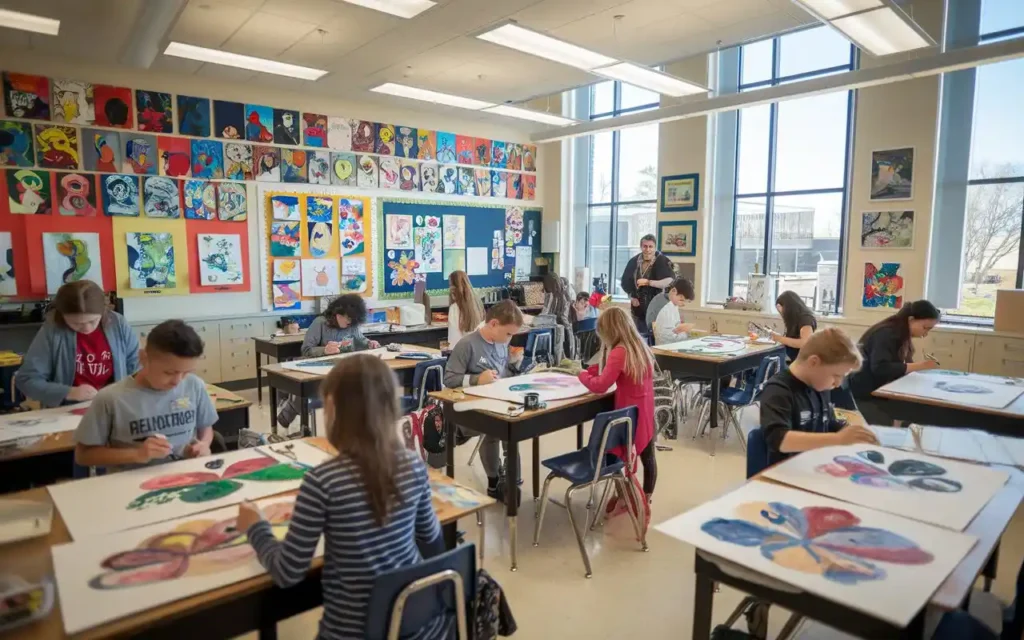Mental Health Awareness Activities for Students
Introduction
Mental health awareness is crucial in educational settings to foster a supportive and understanding environment for students. Implementing mental health awareness activities for students can significantly enhance their well-being, academic performance, and overall quality of life. This comprehensive guide explores various activities designed to promote mental health awareness among students of all ages.
Importance of Mental Health Awareness
Mental health challenges among students are increasingly recognized as a significant concern. Awareness activities play a vital role in:
- Reducing stigma associated with mental health issues
- Providing students with tools to manage stress and anxiety
- Encouraging open conversations about mental well-being
- Creating a supportive school environment
Mental Health Awareness Activities for Students
Classroom-Based Activities

Integrating mental health awareness into the classroom can make a significant impact. Here are some effective classroom-based activities:
Mental Health Education Sessions
Description: Incorporate lessons that cover topics such as understanding emotions, recognizing signs of mental health issues, and learning coping strategies.
Wellbeing Check-ins
Description: Begin each class with a brief check-in where students can share how they’re feeling using mood meters or simple verbal sharing.
Interactive Workshops and Seminars

Interactive sessions can engage students actively and provide them with practical tools to manage their mental health.
Guest Speakers and Panels
Description: Invite mental health professionals, survivors, or advocates to speak about their experiences and provide valuable insights.
Mindfulness and Meditation Sessions
Description: Conduct guided mindfulness exercises or meditation sessions to help students manage stress and anxiety.
Creative Expression Activities

Encouraging creative expression allows students to process and articulate their emotions in a healthy manner.
Art Projects
Description: Encourage students to express their emotions and experiences through drawing, painting, or collage-making.
Journaling and Creative Writing
Description: Provide prompts that encourage students to write about their feelings, challenges, and coping mechanisms.
Peer Support Programs

Peer support can be a powerful tool in promoting mental health awareness and providing students with relatable support systems.
Buddy Systems
Description: Pair students to provide mutual support, fostering a sense of community and belonging.
Peer Mentoring
Description: Train selected students to act as peer mentors who can offer guidance and support to their classmates.
School-Wide Initiatives

Implementing initiatives that involve the entire school community can create a unified approach to mental health awareness.
Mental Health Awareness Week/Month
Description: Organize a series of events, workshops, and activities throughout the week or month to raise awareness and reduce stigma.
Informational Campaigns
Description: Display posters, share informational flyers, and utilize school media channels to disseminate mental health information.
Physical and Outdoor Activities

Engaging in physical activities can significantly improve mental health by reducing stress and enhancing mood.
Yoga and Exercise Classes
Description: Offer yoga sessions or organize regular physical activities to help students reduce stress and improve their mood.
Nature Walks and Outdoor Games
Description: Utilize outdoor spaces for activities that promote relaxation and physical well-being.
Digital and Online Activities

Leveraging digital platforms can make mental health awareness activities more accessible and engaging for students.
Virtual Workshops and Webinars
Description: Host online sessions focused on various mental health topics, making them accessible to all students.
Mental Health Apps and Online Resources
Description: Introduce students to apps that support mental wellness, such as mood trackers or guided meditation apps.
Community and Volunteer Engagement

Engaging with the community and encouraging volunteerism can enhance students’ sense of purpose and connection.
Partner with Local Organizations
Description: Collaborate with mental health organizations to bring resources and expertise to the school.
Volunteer Opportunities
Description: Encourage students to participate in community service related to mental health, fostering empathy and social responsibility.
Educational Materials and Resources

Providing educational materials can help students understand mental health concepts and develop effective coping strategies.
Worksheets and Handouts
Description: Provide materials that help students understand mental health concepts and develop coping strategies.
Recommended Reading and Books
Description: Curate a list of books that address mental health topics suitable for different age groups.
Fun and Engaging Activities

Incorporating fun elements can make mental health awareness activities more appealing and effective.
Mental Health Games
Description: Use games designed to teach emotional regulation, empathy, and resilience in an engaging manner.
Dance and Music Therapy
Description: Incorporate music and dance as therapeutic outlets for expression and stress relief.
Implementation Tips
- Tailor to Age Groups: Adjust activities to be age-appropriate, ensuring relevance and engagement for elementary, middle, and high school students.
- Foster a Supportive Environment: Create a safe space where students feel comfortable discussing mental health without judgment.
- Involve Stakeholders: Engage teachers, parents, and mental health professionals in planning and executing activities.
- Evaluate and Adapt: Regularly assess the effectiveness of activities and be willing to make adjustments based on feedback and outcomes.
Conclusion
Implementing mental health awareness activities for students is essential for creating a nurturing and supportive educational environment. By incorporating a variety of activities tailored to different needs and age groups, schools can effectively promote mental well-being, reduce stigma, and empower students to seek help when needed. Remember to continuously evaluate and adapt these activities to ensure they meet the evolving needs of your student population.
References




